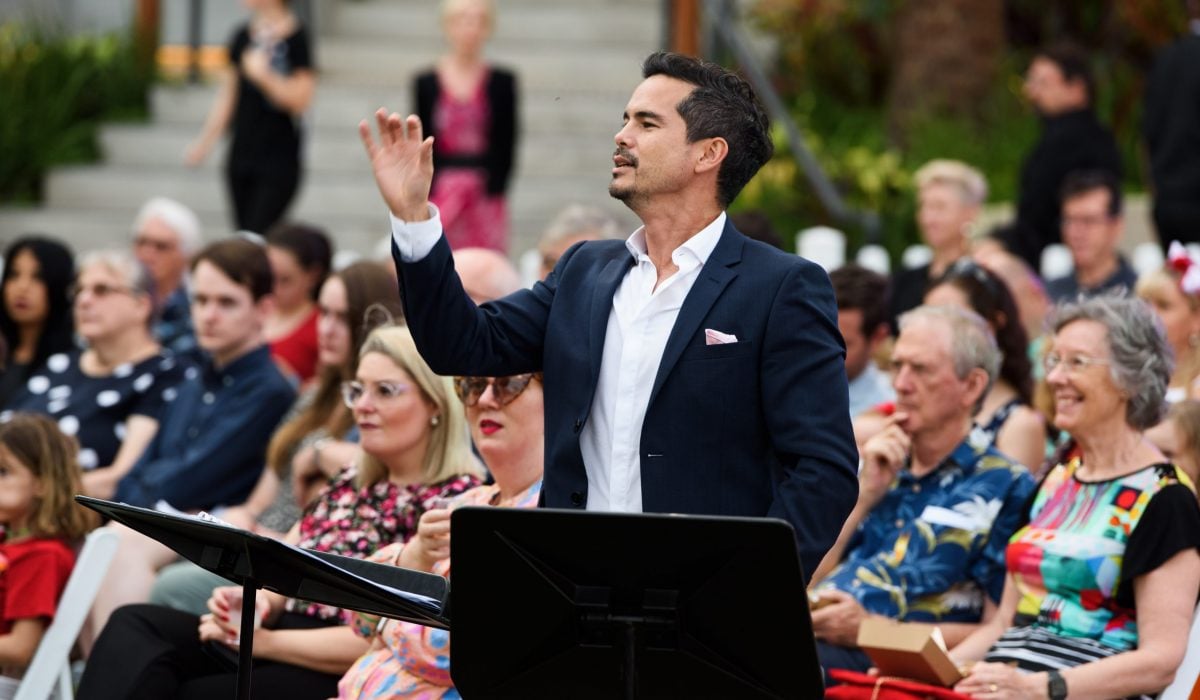
Conductor’s Note – The Marriage of Figaro
Opera Queensland's Resident Conductor and Associate Music Director Dane Lam, leads the cast and the Queensland Symphony Orchestra for our new production of Mozart's 'The Marriage of Figaro'. Dane shares his thoughts on the legacy of the conductor in this excerpt from our program.
As a conductor, Mozart is where opera starts. Without wanting to be unfair to Monteverdi, Handel, or Gluck, Mozart took this most ravishing of art forms and turbo charged it in a way that no composer had done before.
Before Mozart, opera relied on two main devices to tell the story: arias (or songs) where the characters would sing about one particular emotion for several minutes, and the more speech-like, sparsely-accompanied recitatives, where most of the action and plot took place. Once the young Wolfgang Amadeus burst on to the scene suddenly we have arias and ensembles (duets, trios, quartets etc.) where the music pops, fizzles, explodes, swoons, and weeps while at the same time the plot drives inexorably onwards.
An object lesson in these musically alive action scenes can be seen in the Trio from Act One of The Marriage of Figaro. We feel the Count’s visceral anger bubble up in orchestral outbursts at the thought of his Countess being in Cherubino’s amorous crosshairs; Susanna’s breathlessness is made three-dimensional in the way
her vocal line descends and is interrupted by her gasps for air; meanwhile Basilio’s insidiousness is conjured up through snide string figures rounded off by officio full stops after each line as if he’s sticking his conniving fingers in everyone’s proverbial pie.
Mozart’s music embodies incongruities and ambiguities that somehow combine to create the sublime. Despite his proclivity for scatological humour, Mozart’s music somehow transcends this to plumb the depths of the human experience. Listen out for both of the Countess’s arias, moments of truth and beauty examining love and its loss. The orchestra spins gossamer lines imbued with longing while the clarinet (a novel addition to the woodwind section in orchestras of the time) nostalgically soars above.
Sublimity gives way to wit and humour in the masterfully-crafted finale to Act Two. What begins as a trio between Count, Countess and Susanna transforms almost imperceptibly into a quartet (with the addition of Figaro), to a quintet (when the irate gardener, Antonio enters to pick a fight over his carnations). The tension ramps up when Marcellina, Basilio, and Bartolo barge in to make a septet and a manically bombastic send-off before interval. The virtuosity Mozart demands from the singers is similarly reflected in the orchestra, pushing the string players in particularly to the limits, with smoke coming from their fingerboards.
Speaking of smoking fingerboards, the entire evening kicks off with one of the most famous overtures in all of music. The great British conductor, Sir Thomas Beecham, quipped that he timed his morning eggs to the four minute-odd Figaro overture (I confess that I also may have used it for similar purposes). These four minutes are certainly bursting with bustling intrigue and irrepressible energy. At one point in my career I attributed this musical sweep to the character of Figaro himself. However, over time it struck me that this overture embodied not Figaro but his cunning, beautiful, charming, resourceful fiancée, Susanna. From the show’s very beginning Susanna is front and centre, reading the rest of men like a book and, ultimately, saving the day.
The opera’s constant shifts in mood, this incessant succession of events is portrayed with striking musical accuracy by Mozart at every turn. It is a great privilege and challenge for the conductor to navigate this myriad of emotions and to encourage this spirit of expressivity from the stage and from the pit. But the potential is there to be unlocked: Mozart’s notes are all on the page waiting to be brought to life with love and immediacy.
Opera Queensland presents The Marriage of Figaro
15 – 31 July
Playhouse, QPAC
